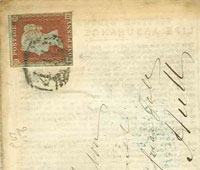Scripophily of Annuities
While some hobbyists collect stamps, antiques, and other memorabilia, others focus their attentions on the collection of historical financial documents such as stocks, bonds, and annuity certificates. This practice is called scripophily, and is a branch of numismatics, or the scientific study of currency. Annuity scripophily holds invaluable importance for those interested in learning how the financial instruments of yesteryear, specifically annuities, have impacted the world of finance today.
Scripophilists collect documents with both aesthetic and historical value. For example, some old annuity certificates feature interesting and beautiful engraving, and the intricacy of their decoration has been hailed as an art unto itself. More importantly, though, by studying old annuity documentation and examining its functions, changes, and manifestations through time, scripophilists can gain incredible insight into the history of such vehicles and can catch a glimpse of the varied roles annuities have played through history.
The collection of annuity documentation is a fascinating branch of scripophily. Annuity artifacts have appeared in numerous forms, from advertisements to carefully wrought, scripted letters, and, like stocks and bonds, such documentation holds significant aesthetic appeal. However, the financial role annuities have played through history is a much more varied one, and the collection of annuity documents touches upon diverse cultures, nations, and purposes, making the collection and analysis of annuities are valuable within many different disciplines; they can tell tales of nation-building, civic development, and social constructs.
The Annuity Museum is proud to be in the forefront of this new field of study. Our renowned collection of annuity artifacts provides the hobbyist as well as the academician with a fertile landscape for the study of annuities as a source of history about the economies and societies in which they evolved.
Hersh Stern, Curator


